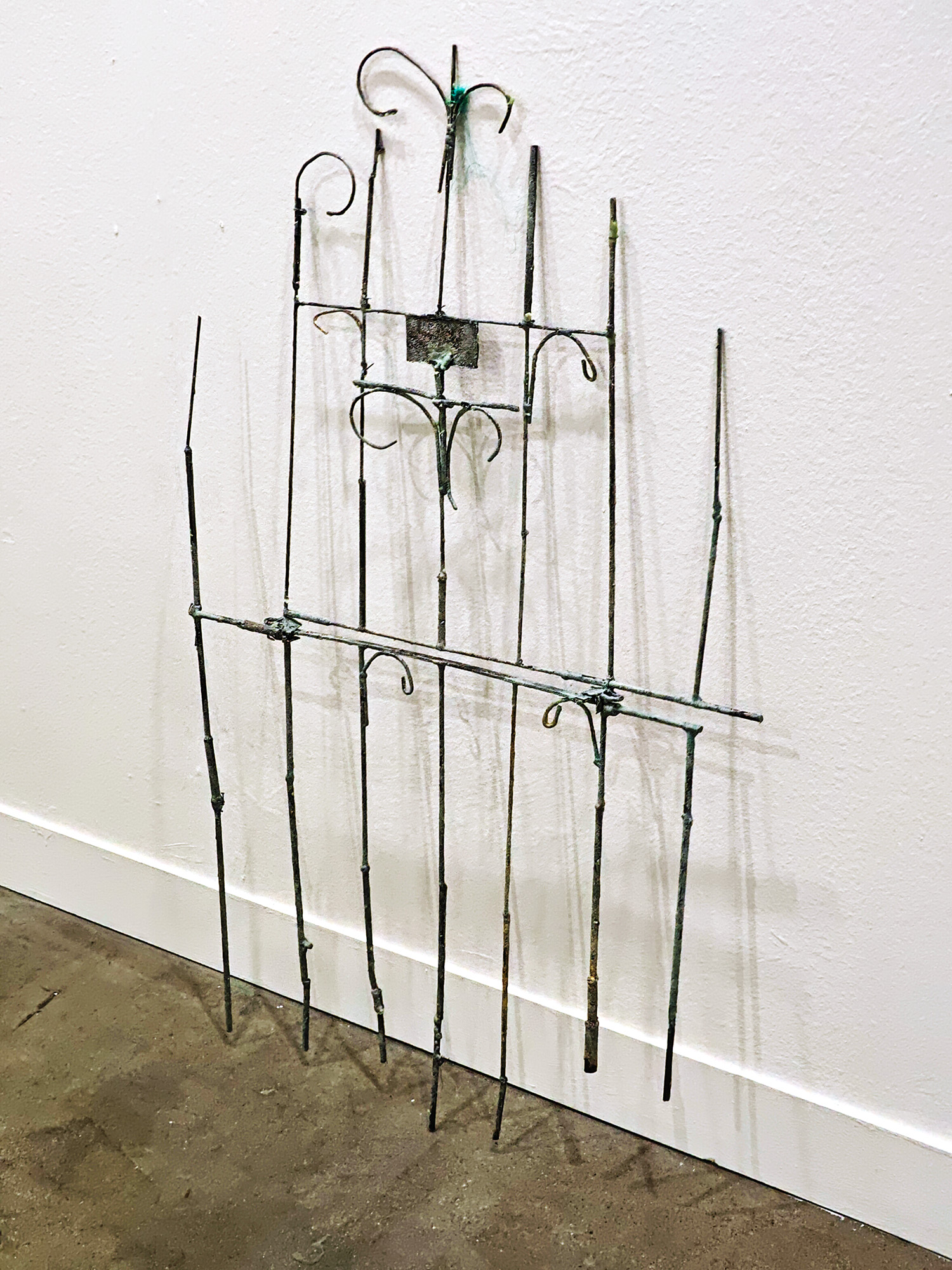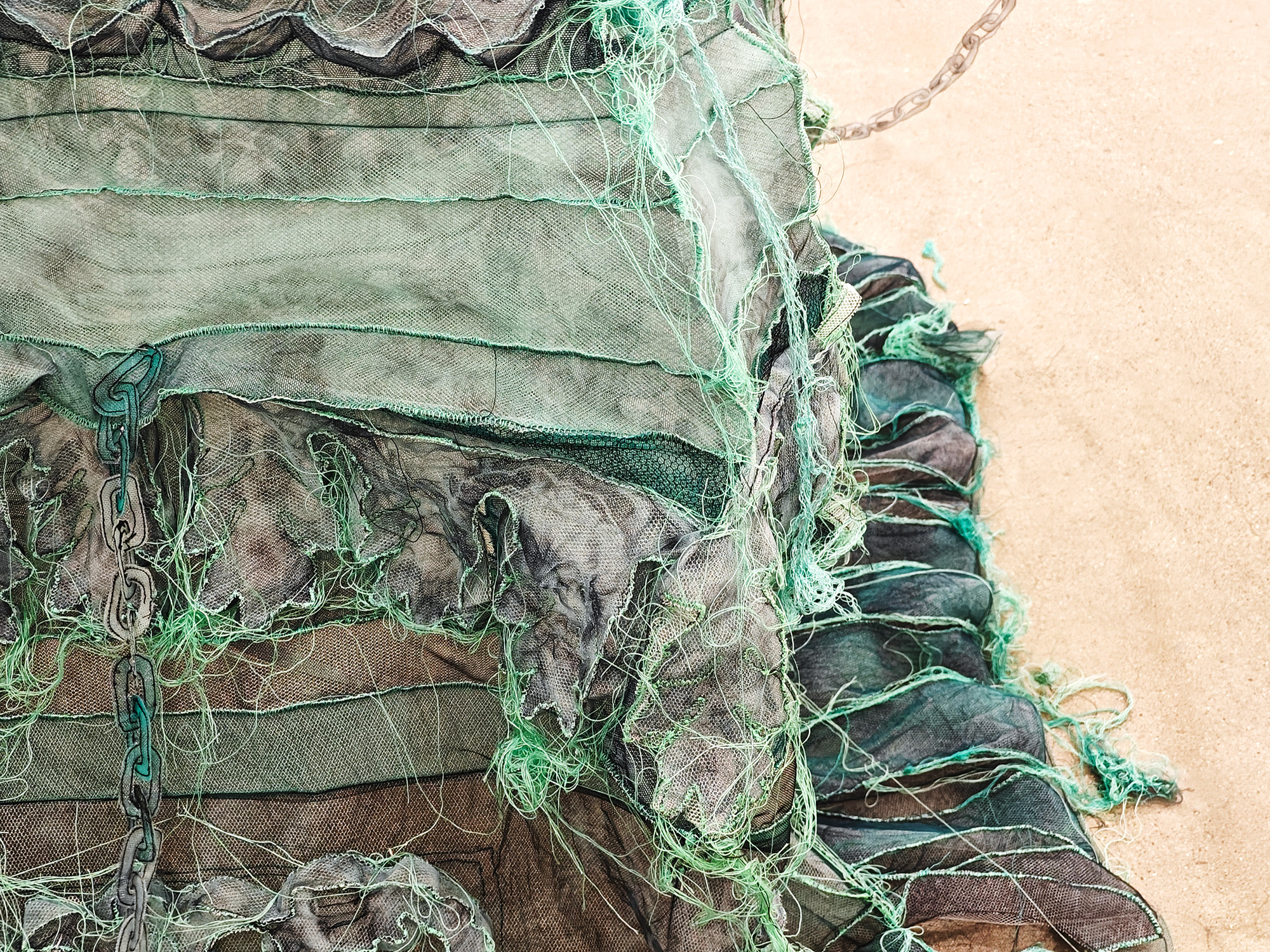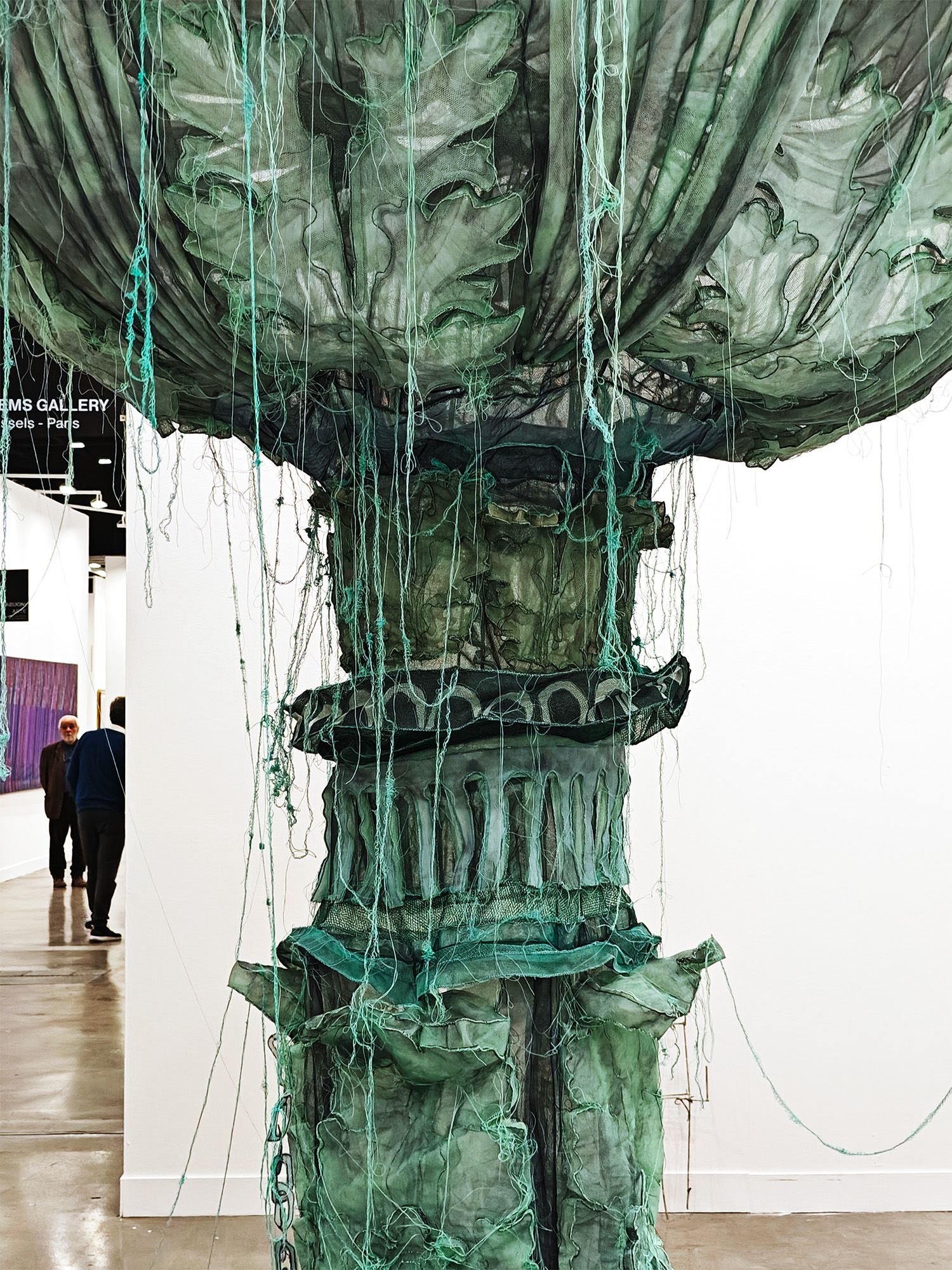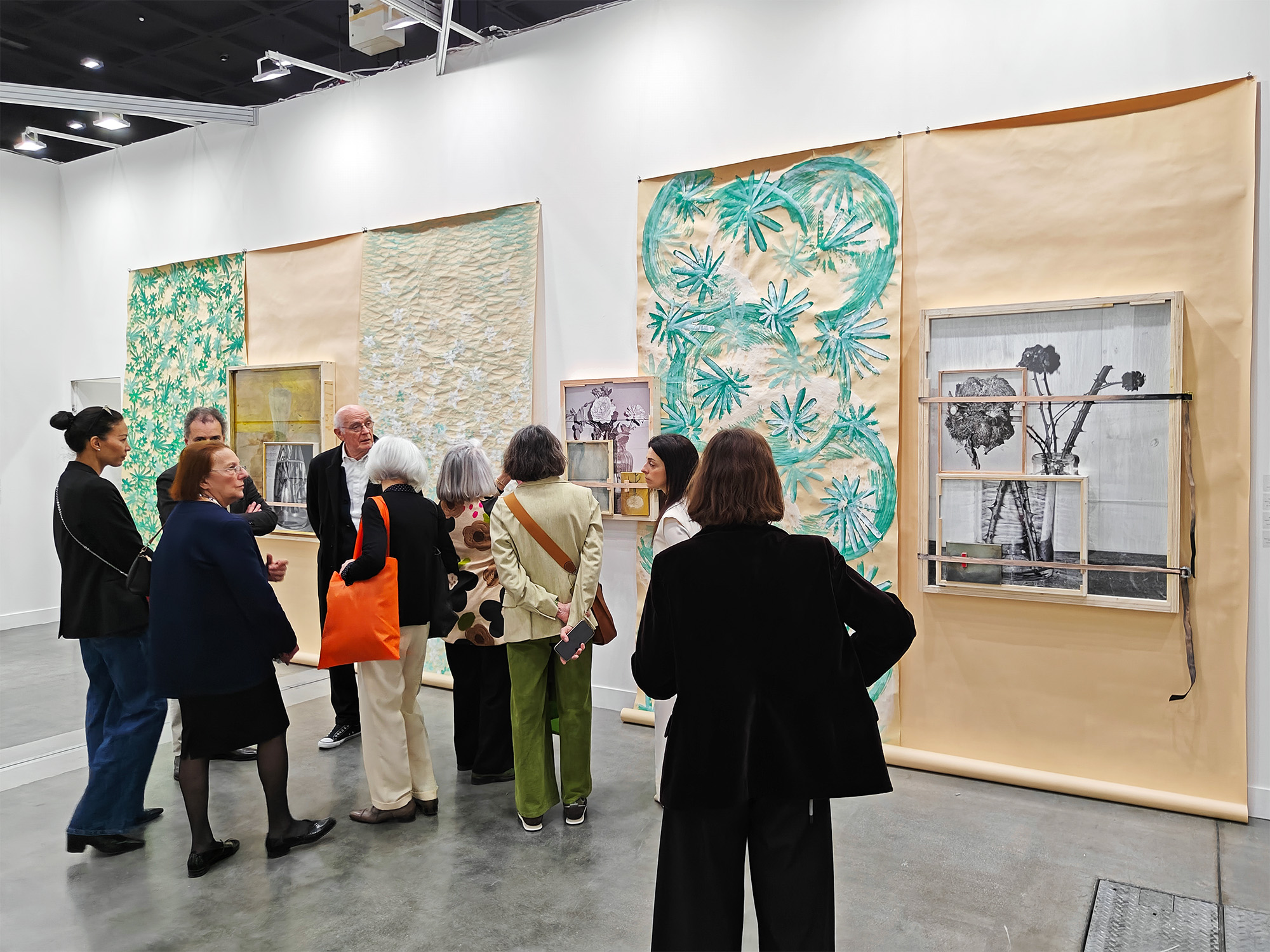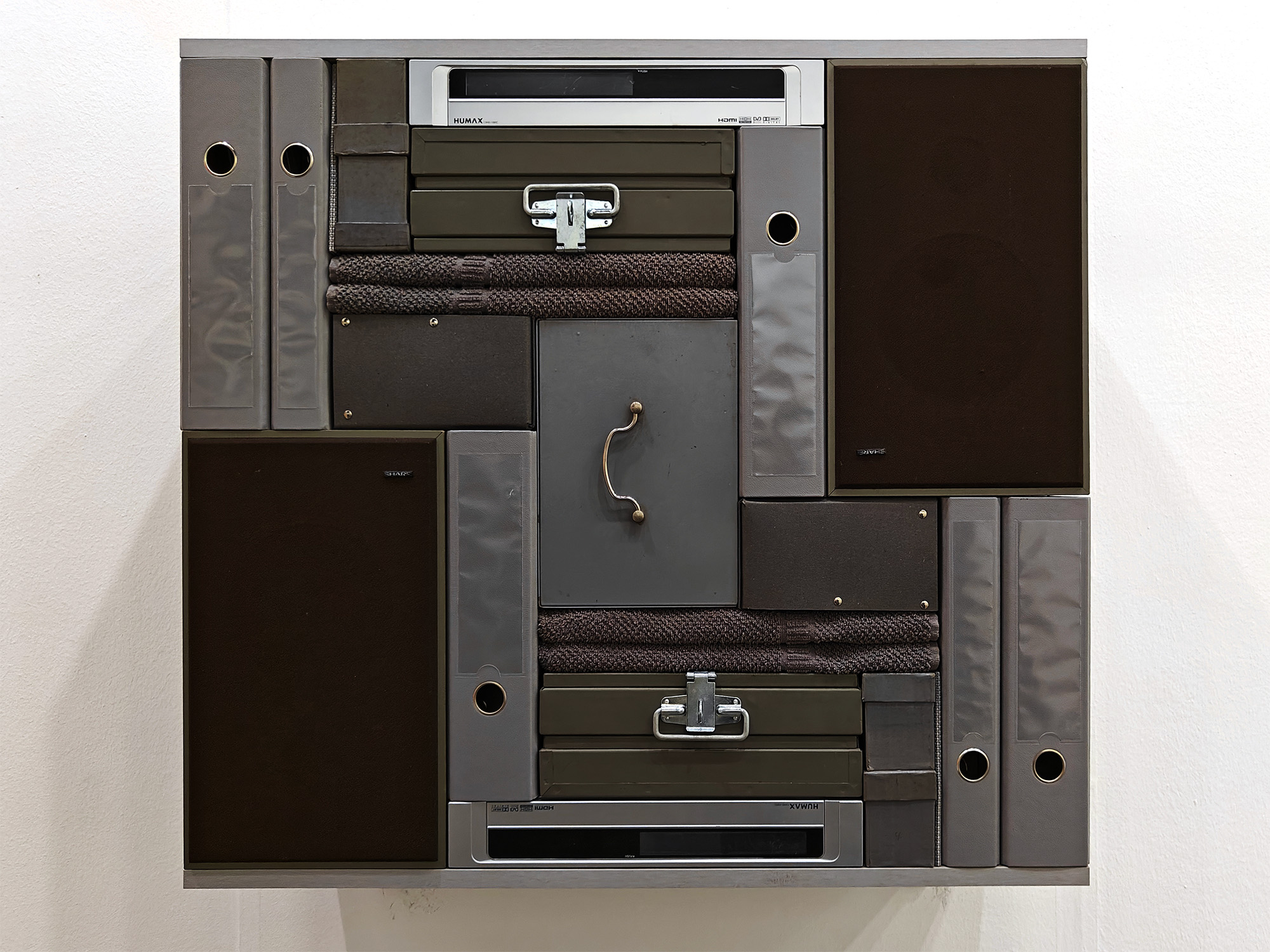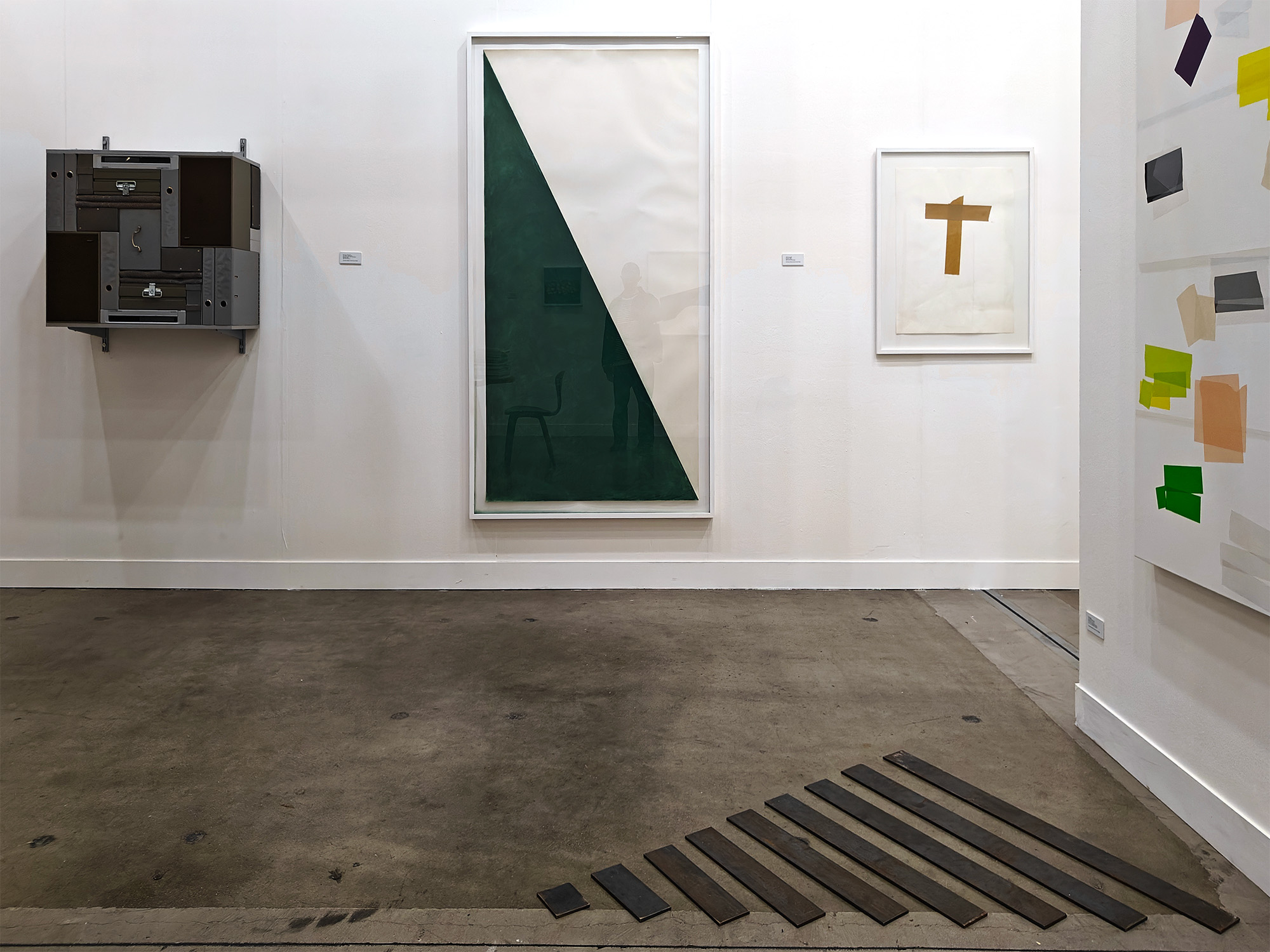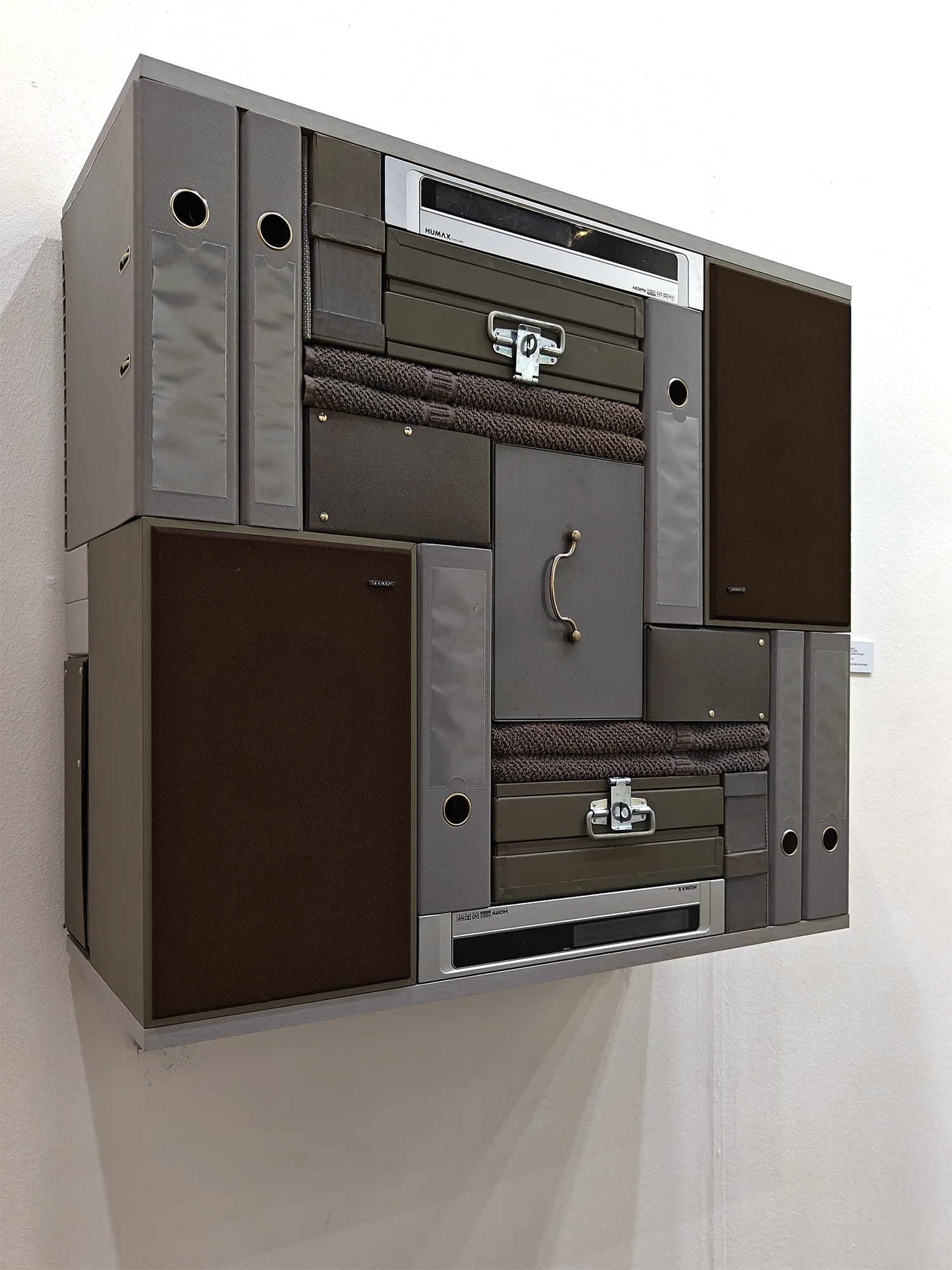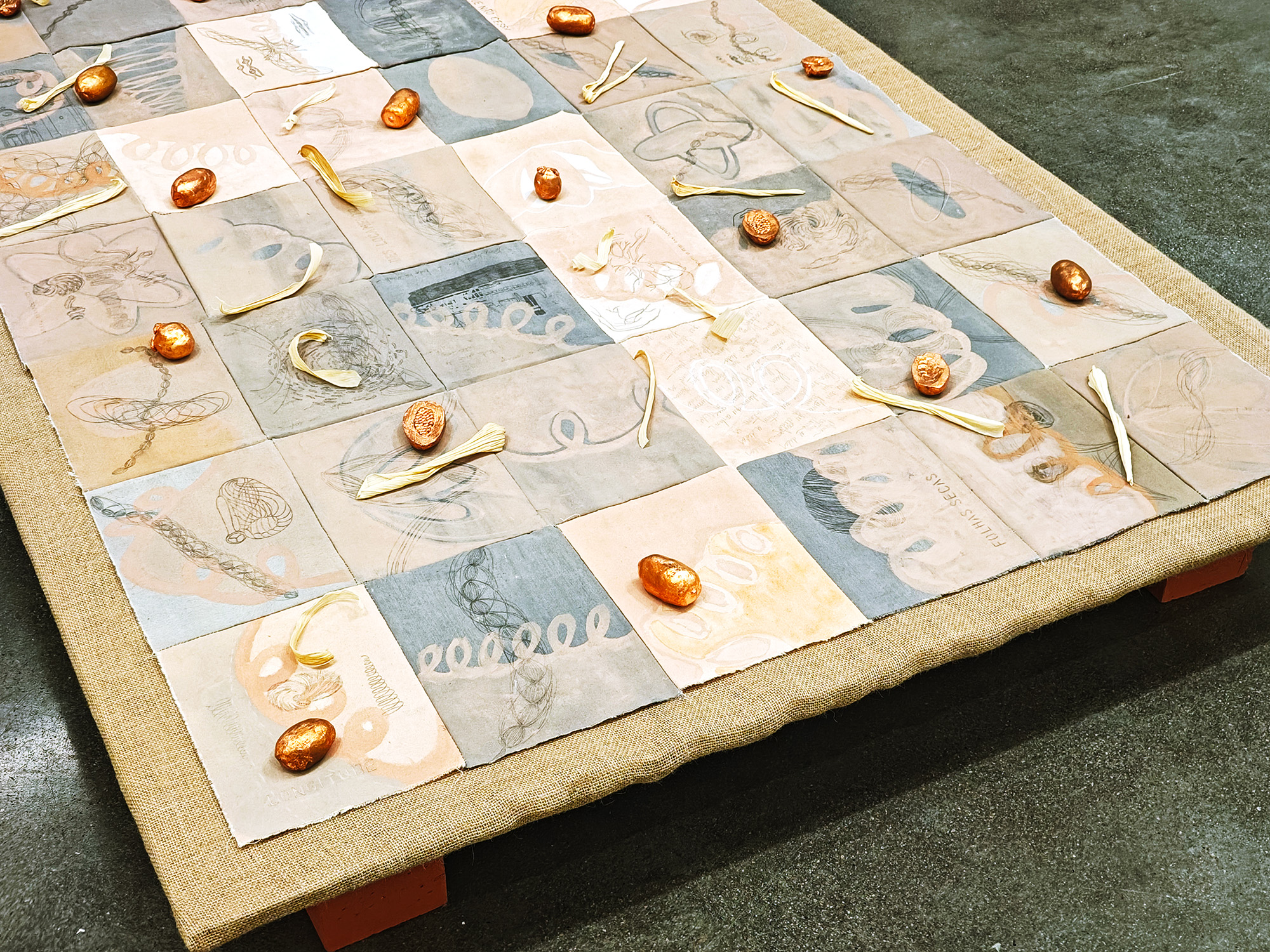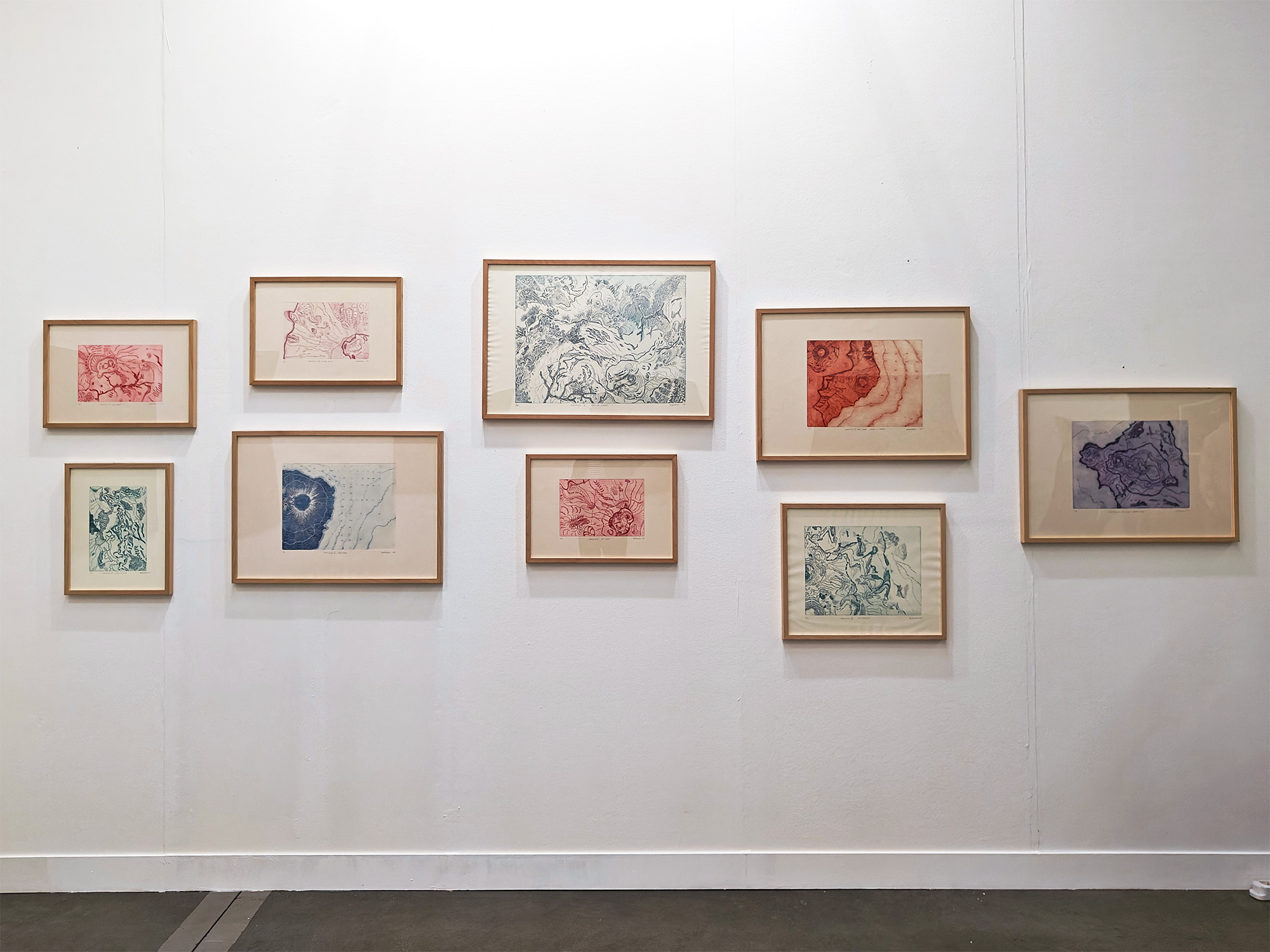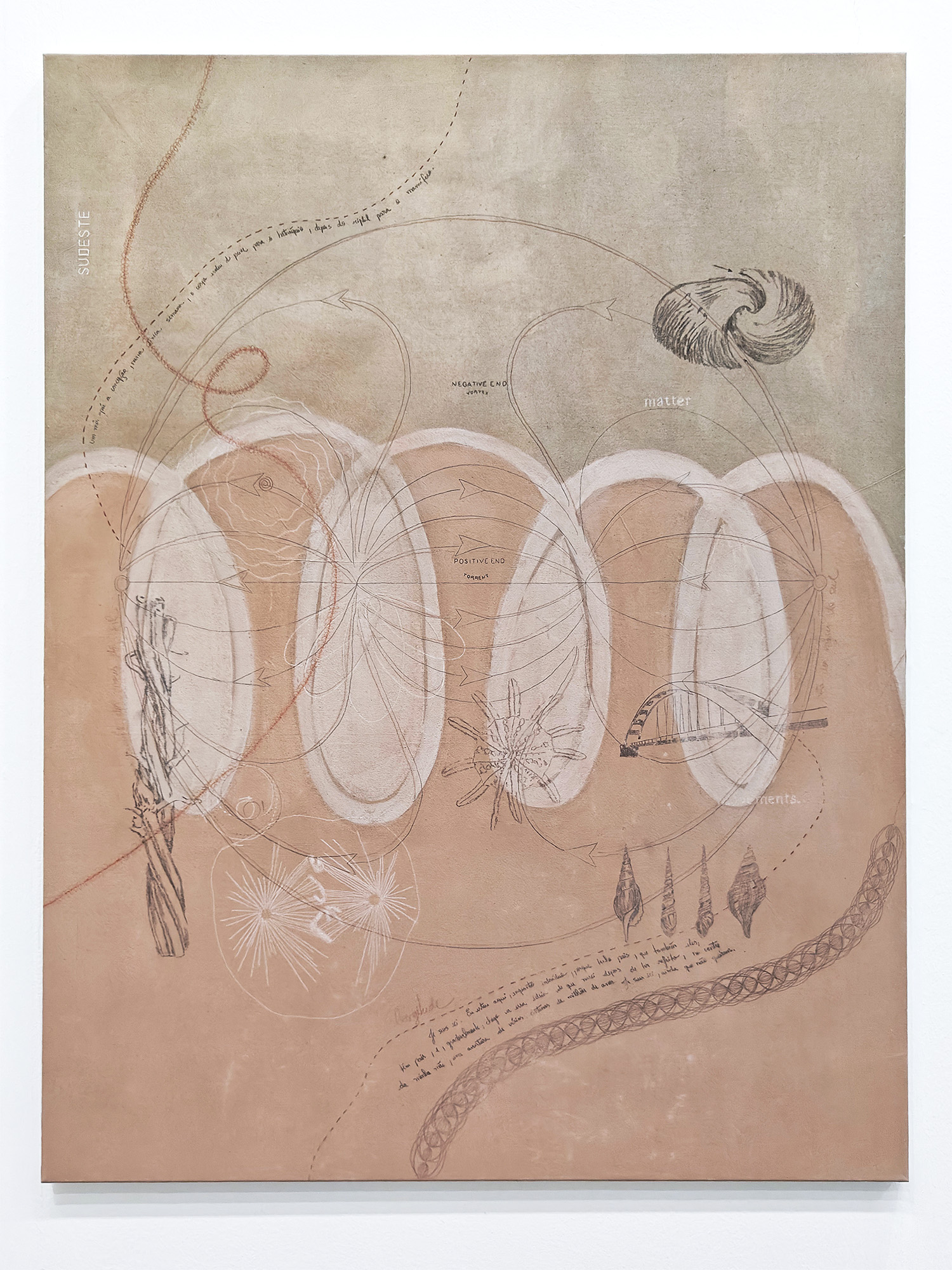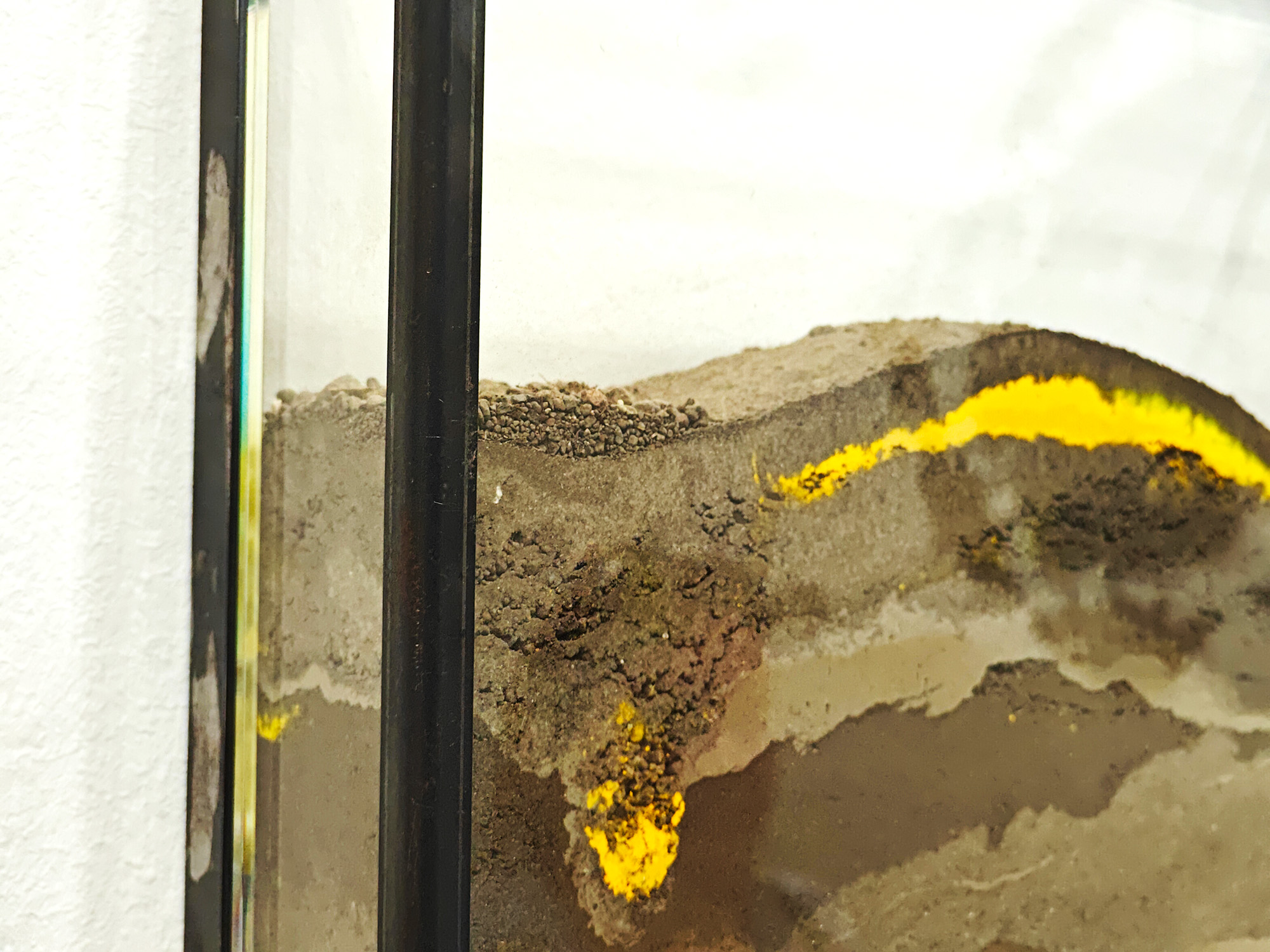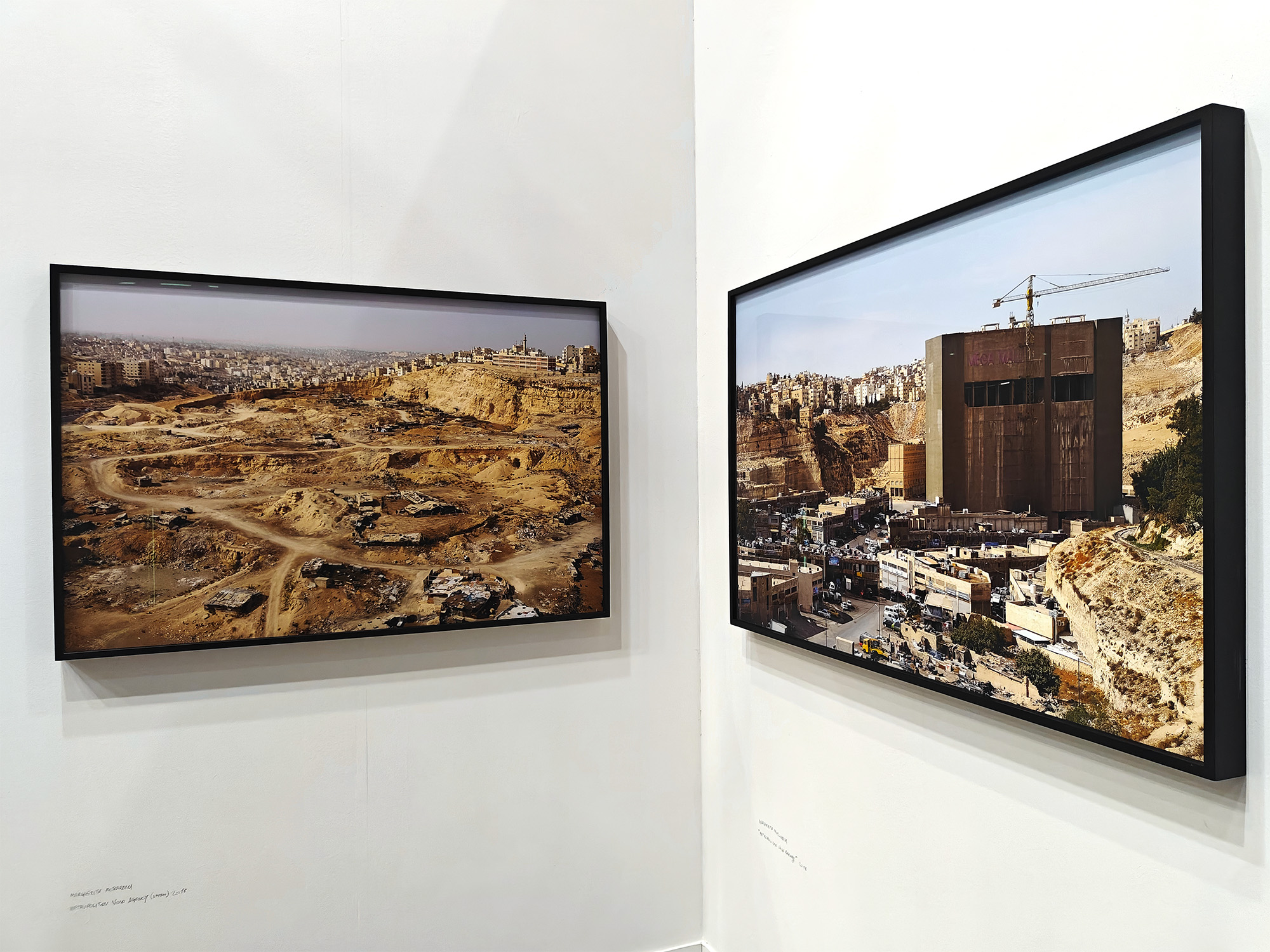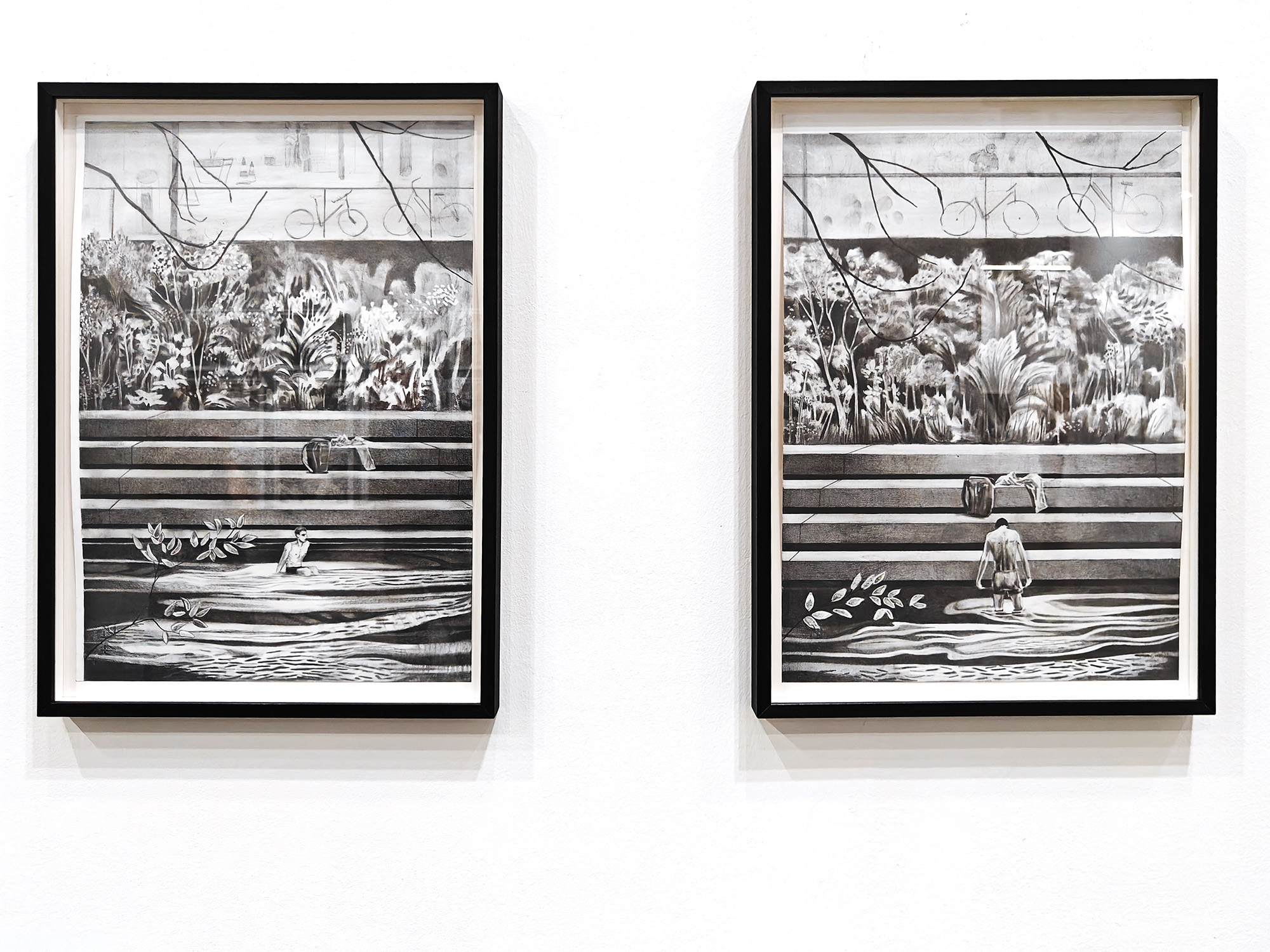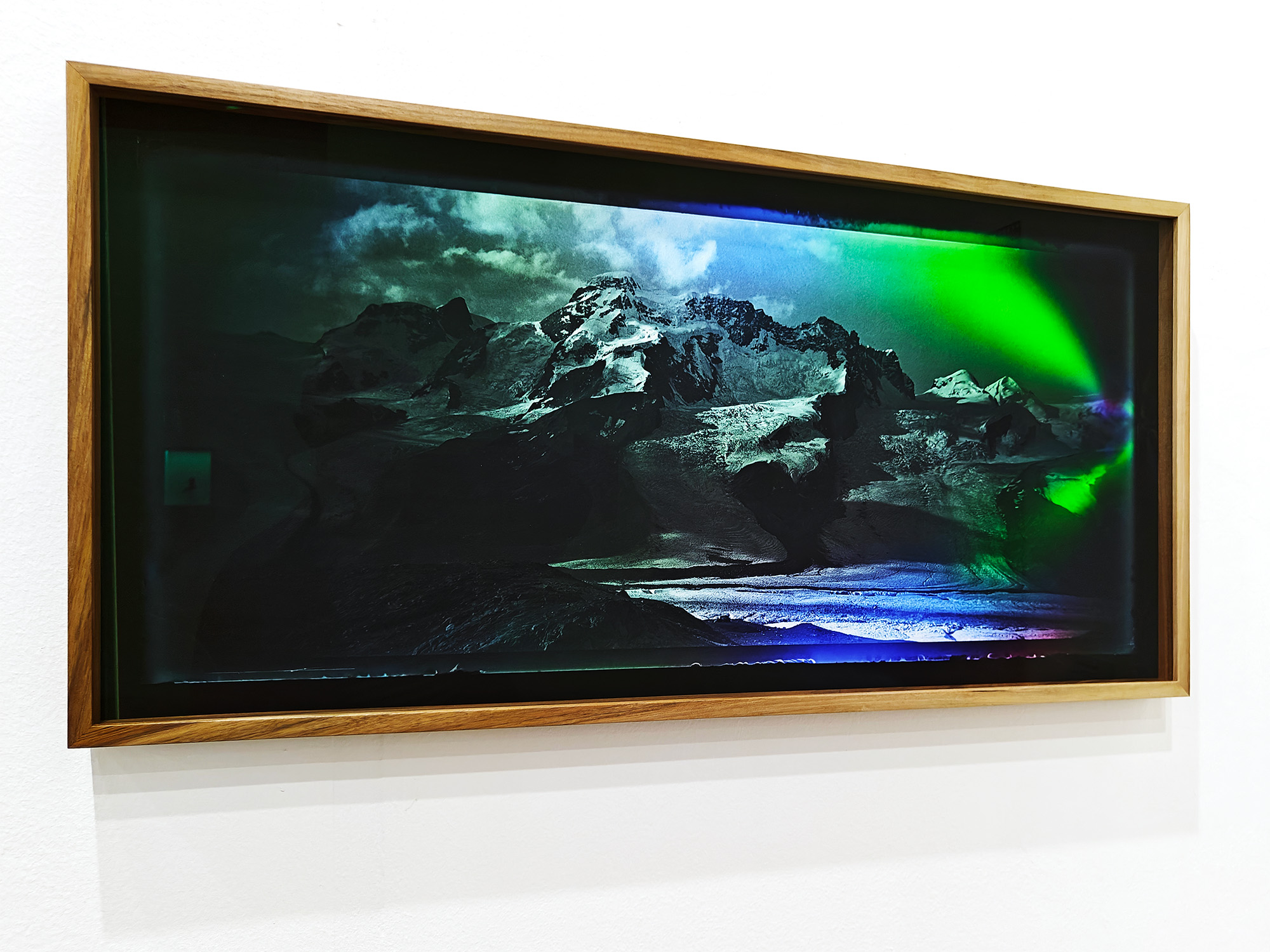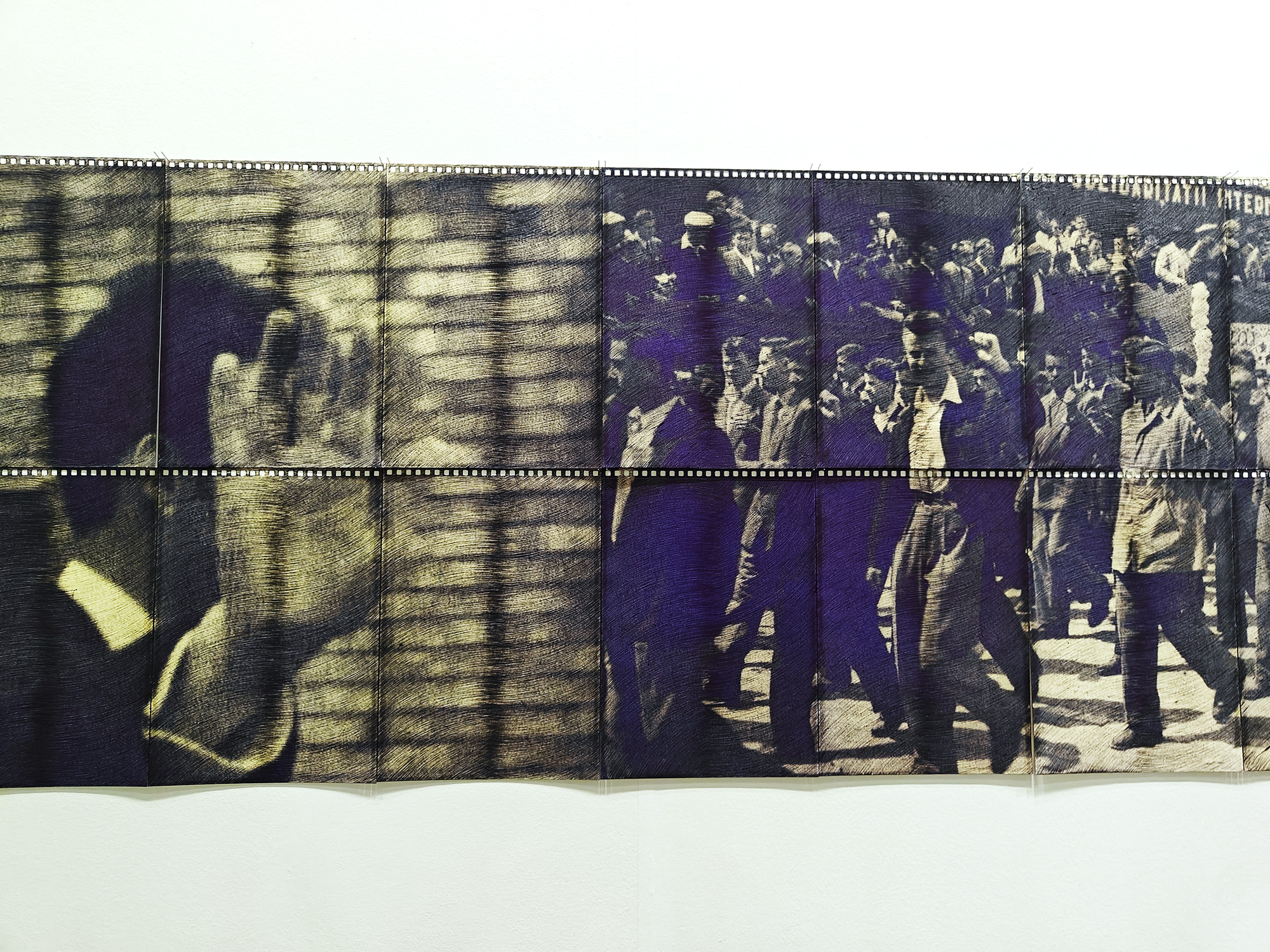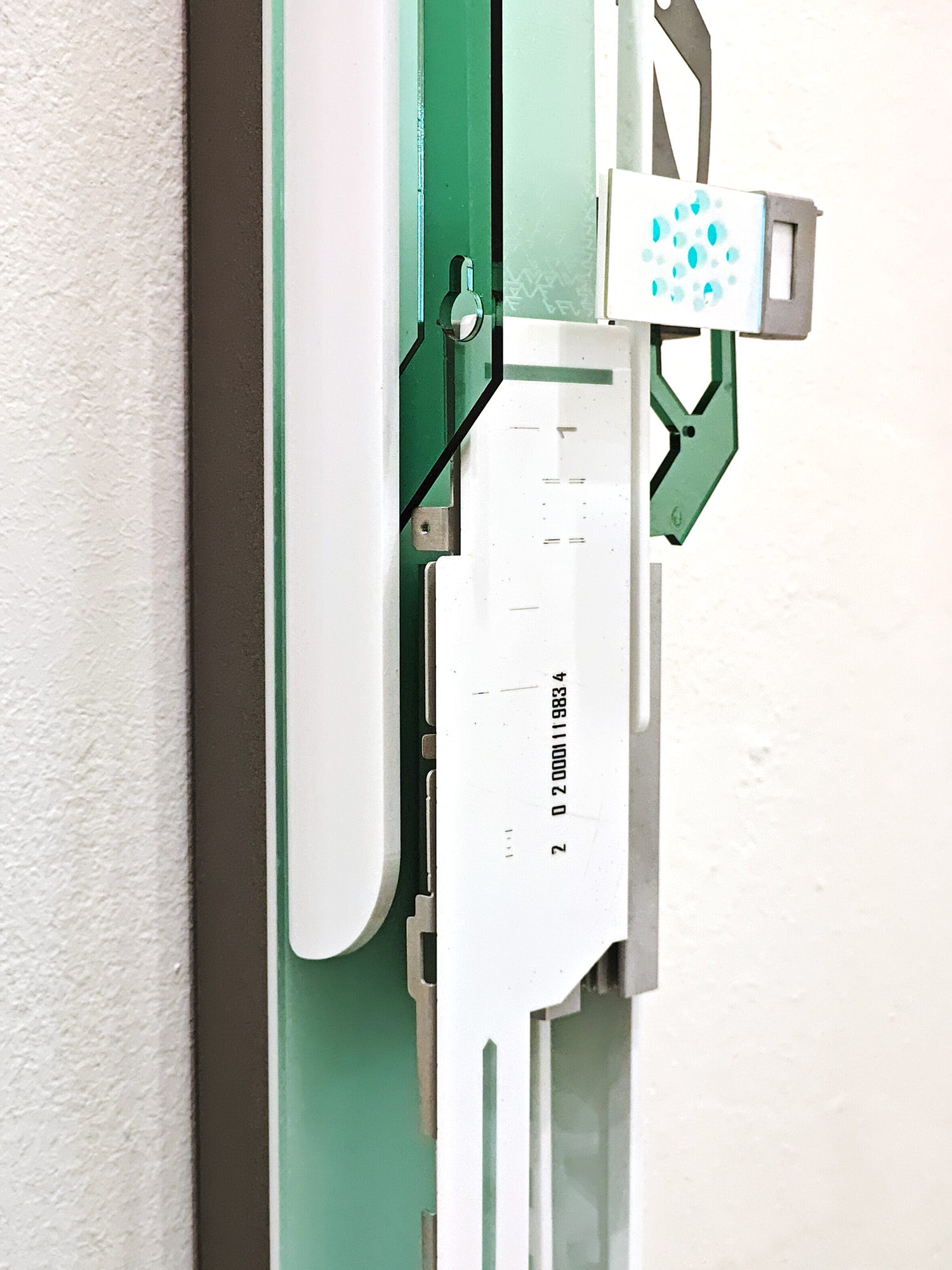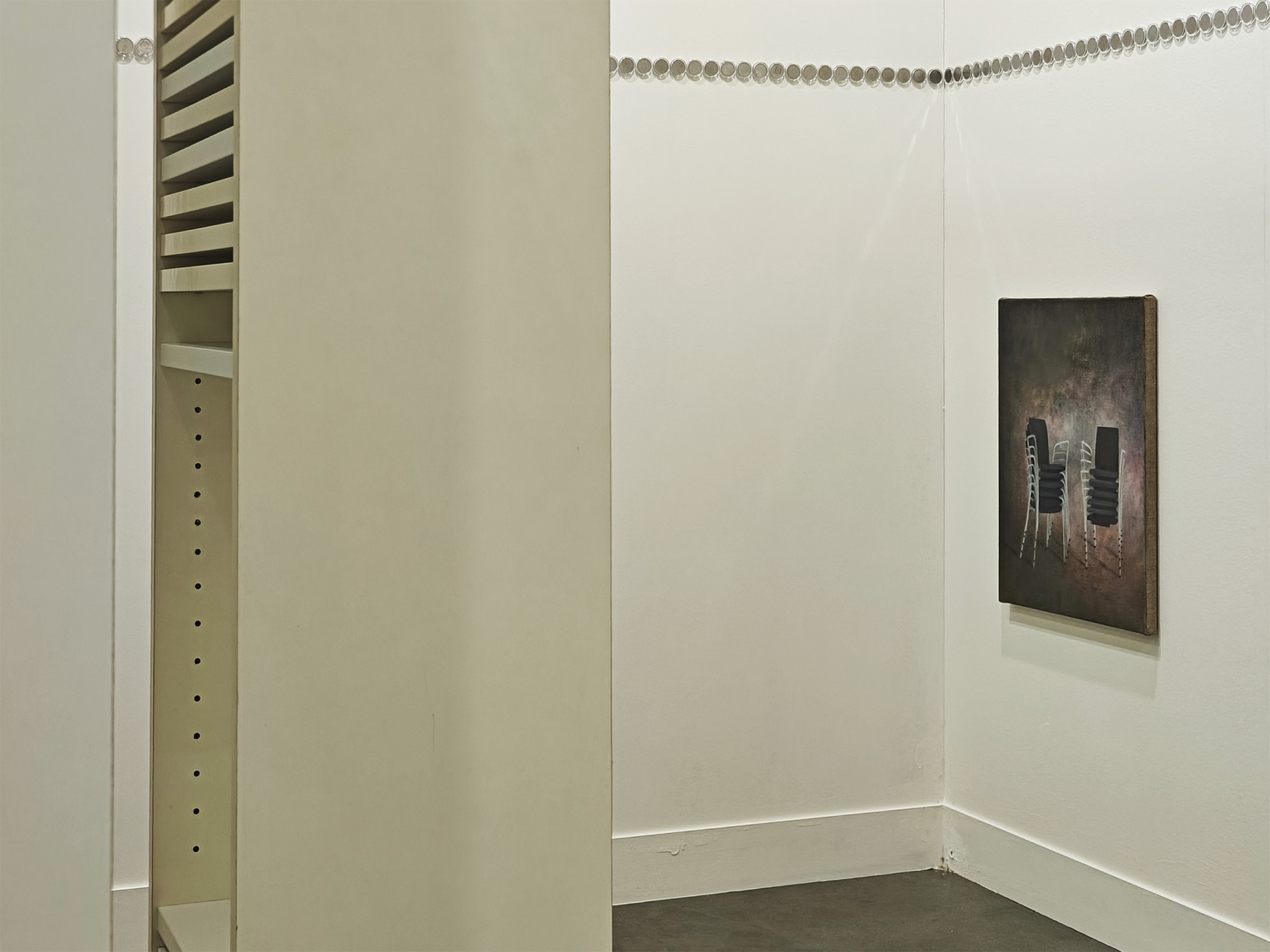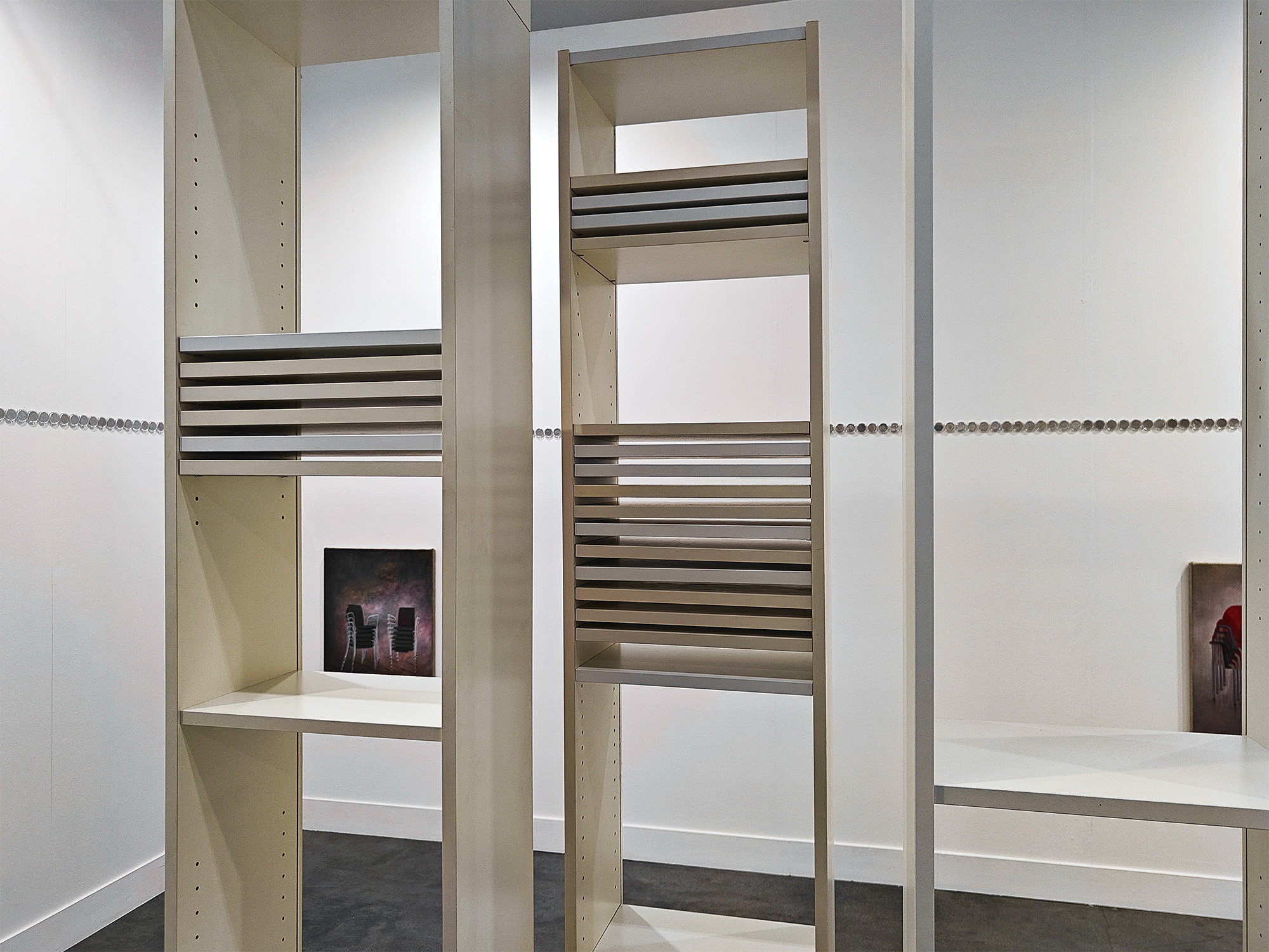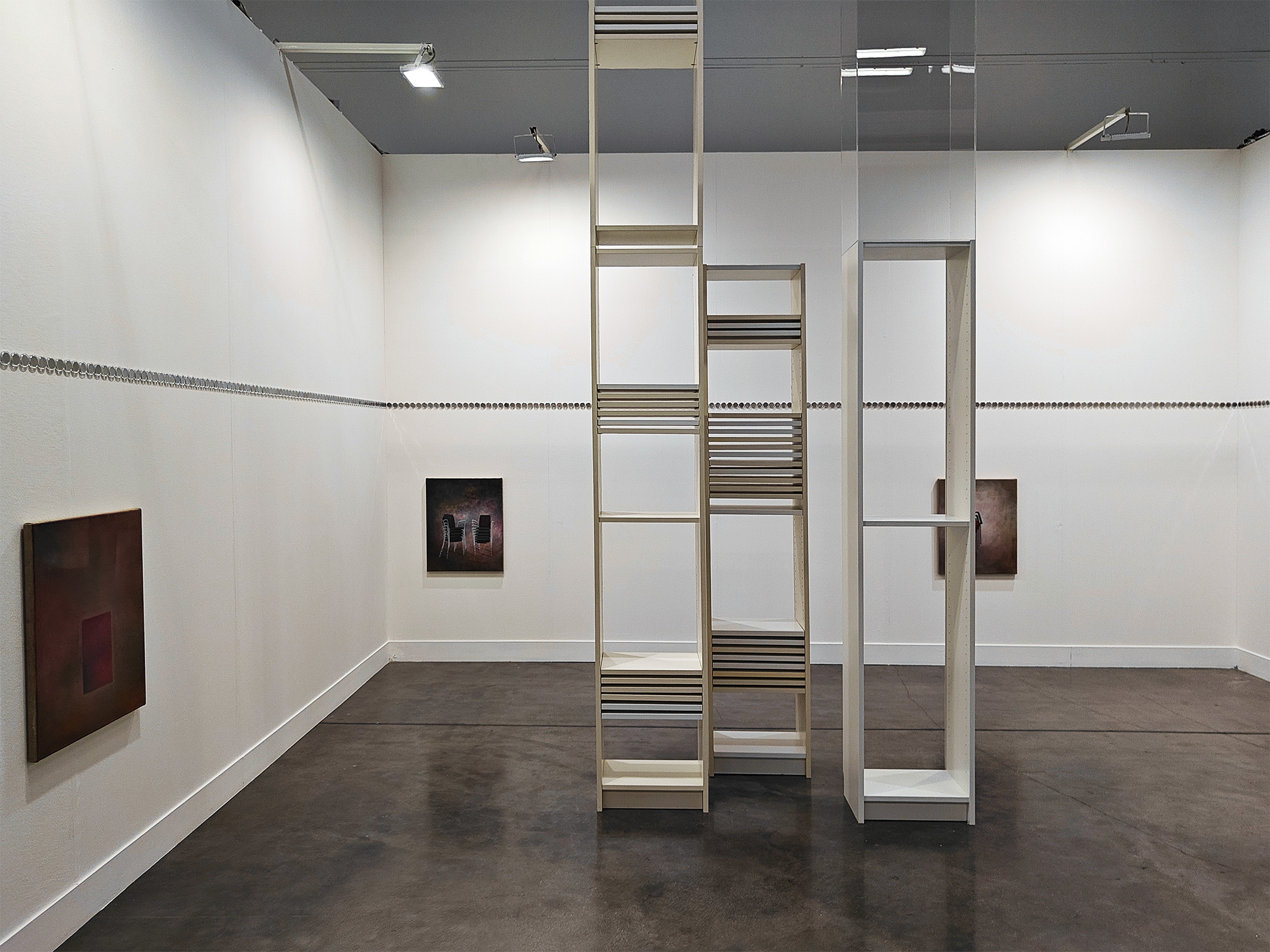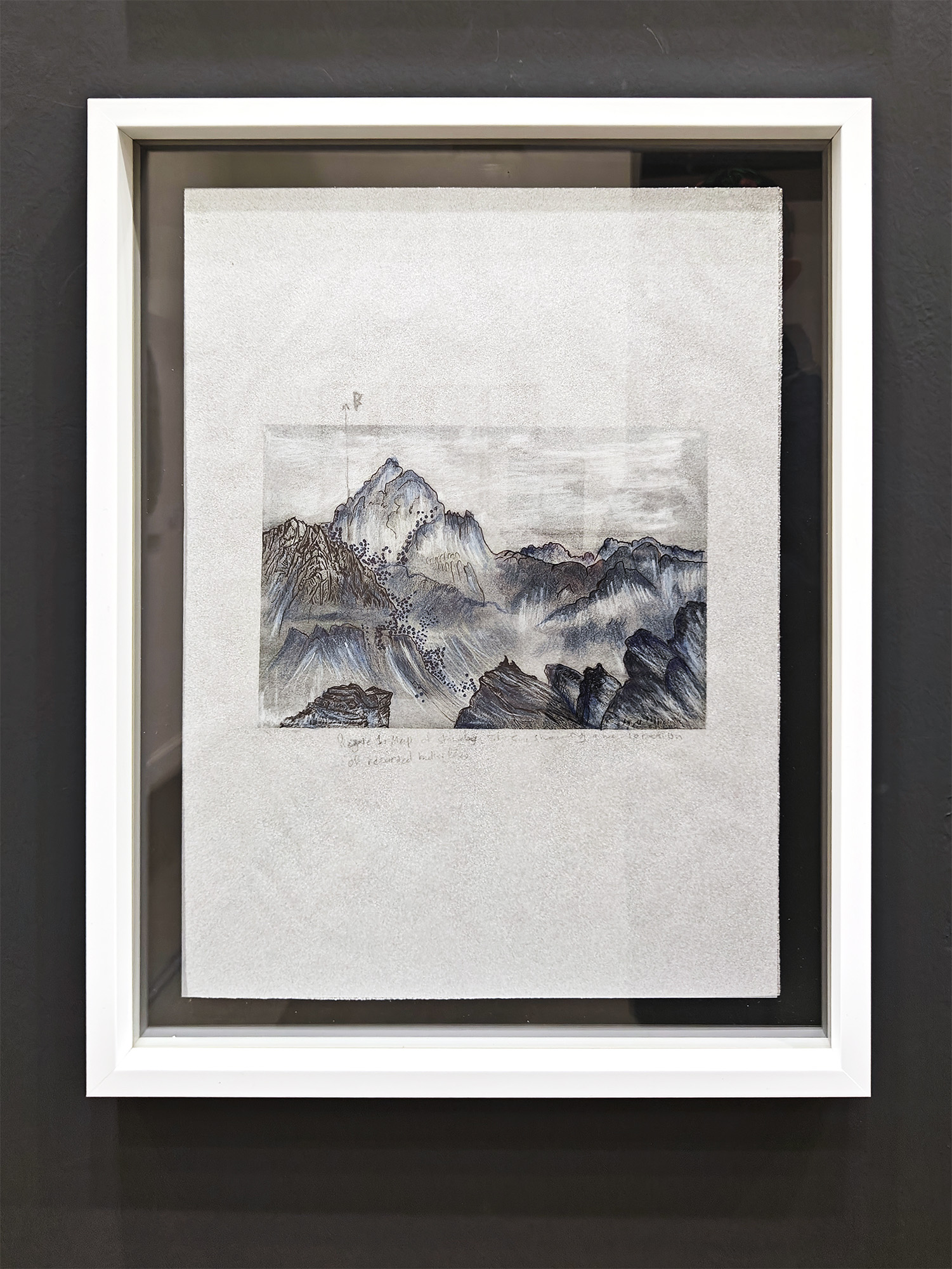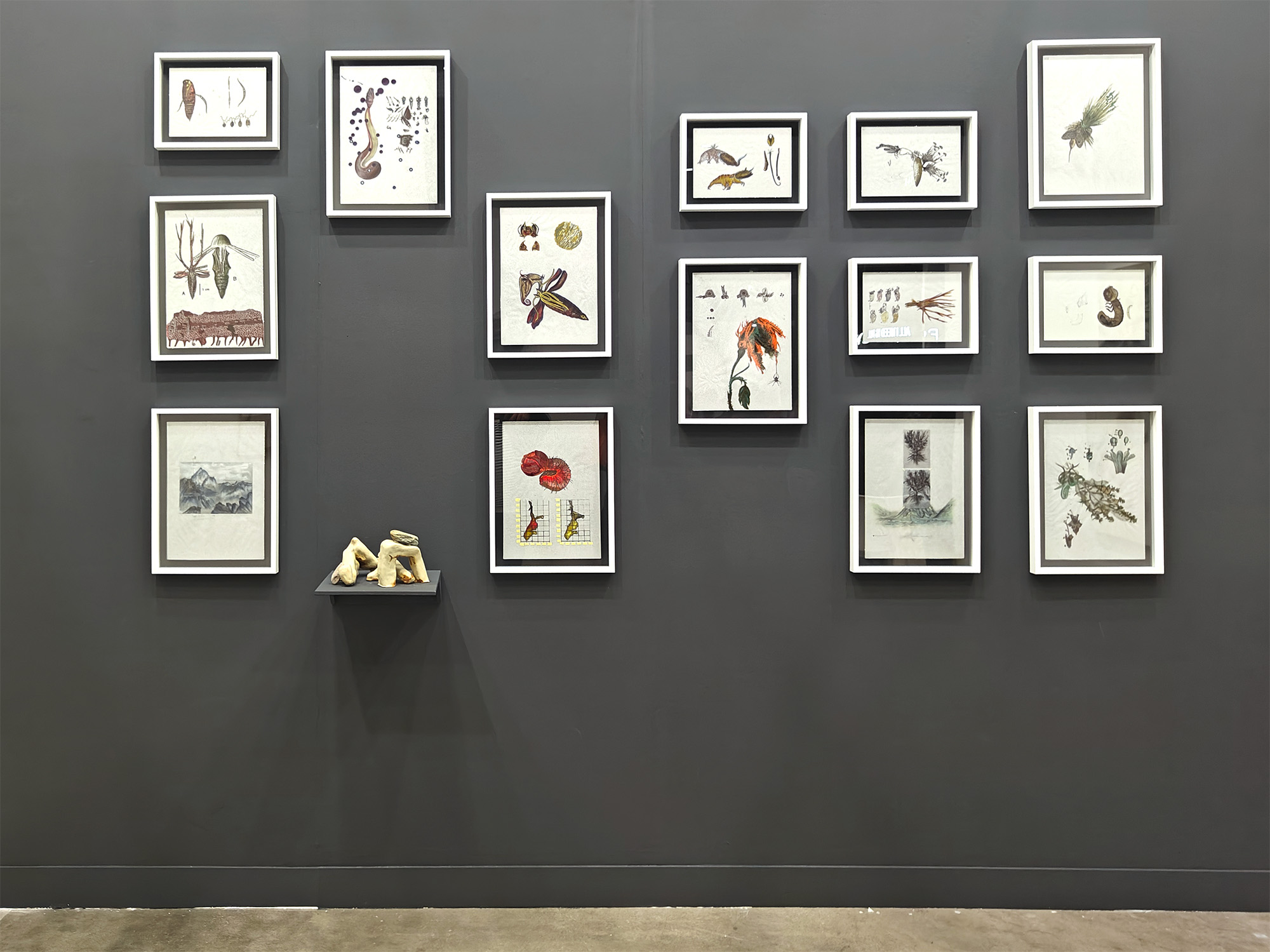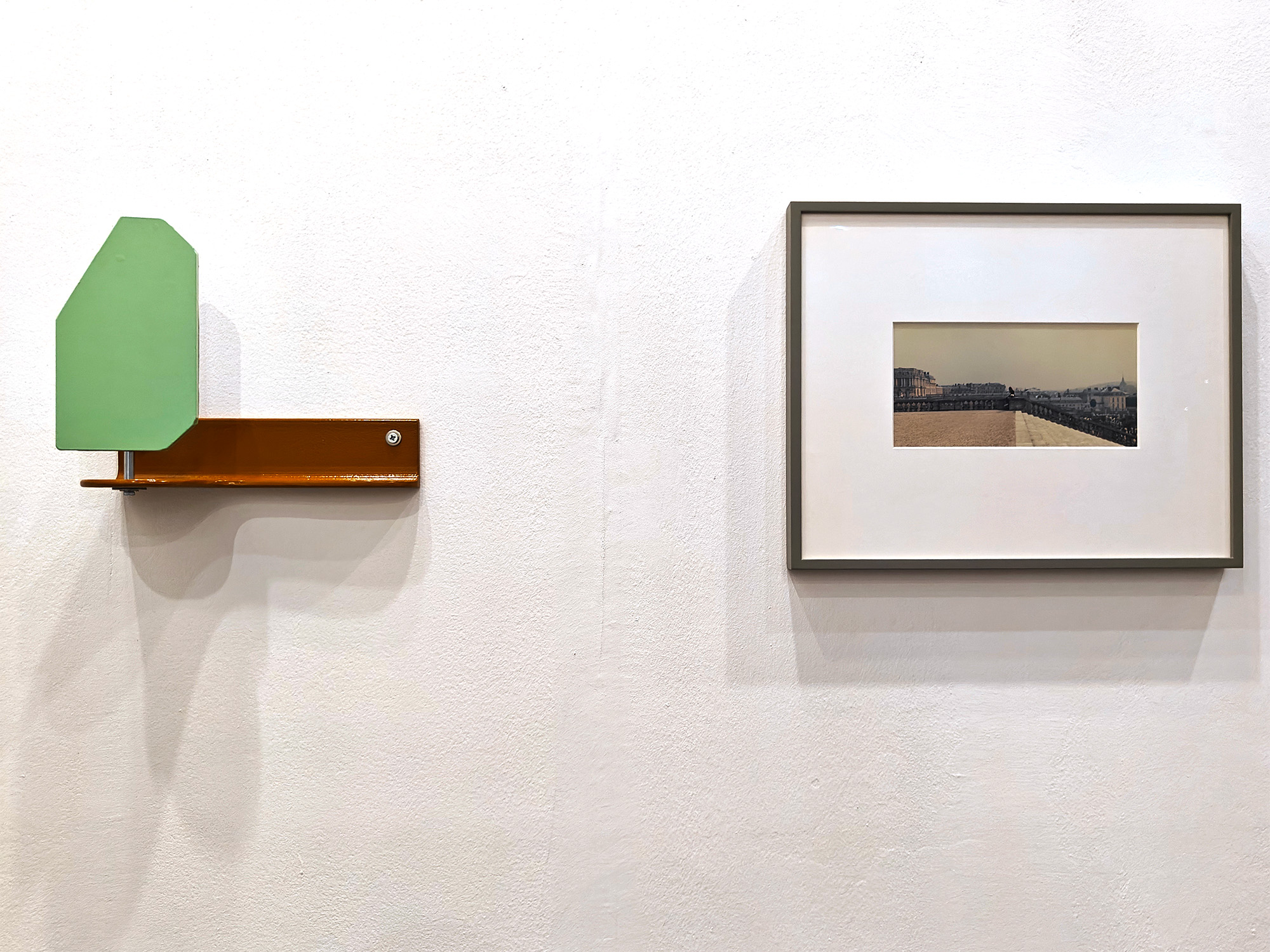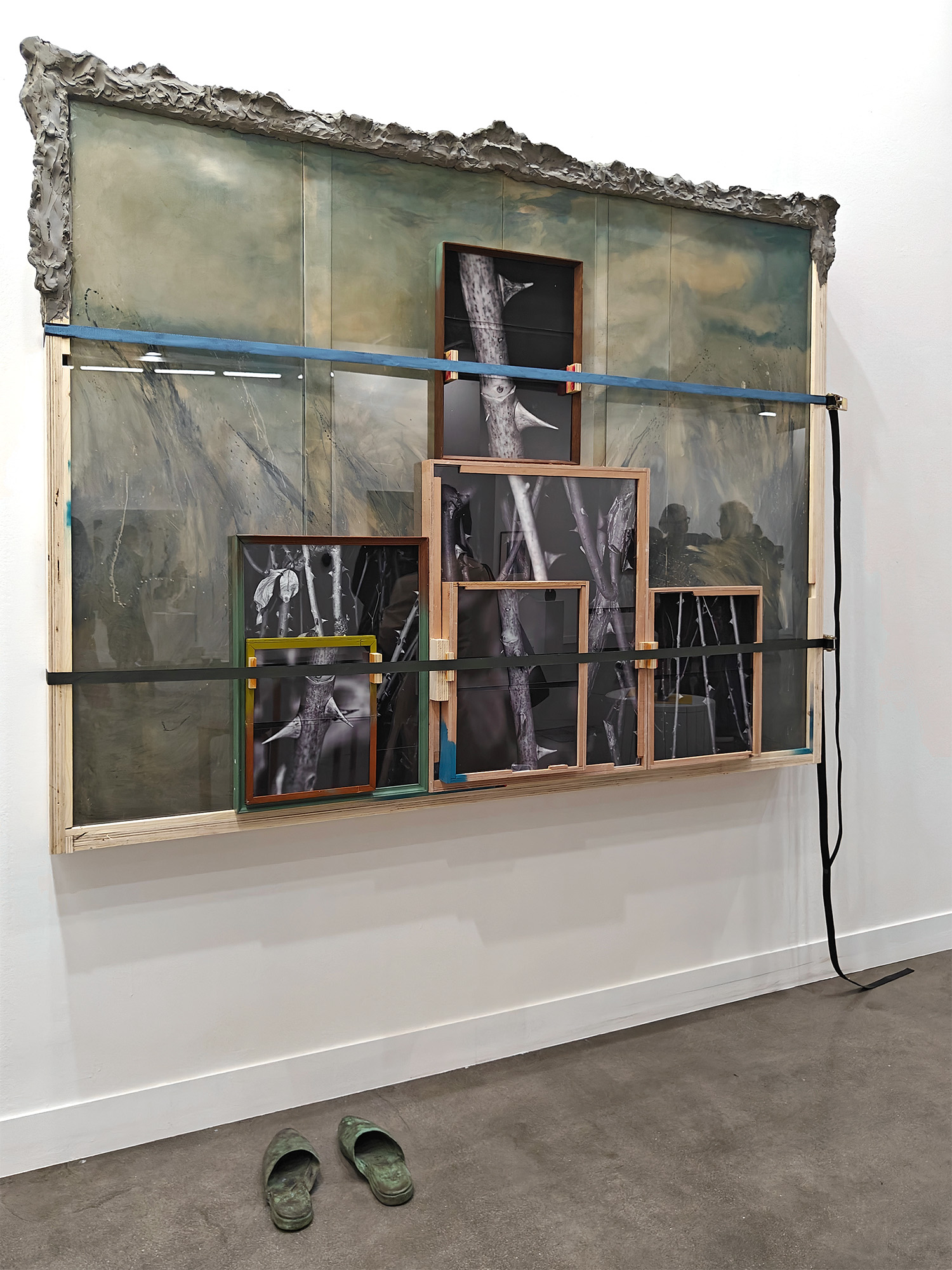10 galleries you should know about from Miart 2025 in Milan
We visited Italy’s leading art fair for modern &
contemporary art to let you know about the best galleries showing artists interested
in architecture, landscape & the built environment. Across the 10
presentations there are works that discuss everything from the domestic to the
international, and deal with the most pressing political issues to ongoing,
underlying systemic problems.
Two years ago, recessed.space visited Miart, Milan’s international
modern and contemporary art fair organised by Fiera Milano (see 00095). Since
then, it has grown in stature & interest, bringing galleries from across
not just Europe but the world to present their works to collectors & the
art audiences from Northern Italy.
Here, we bring you 10 galleries that really speak to our interests in where contemporary art intersects with architecture and landscape. As you know, it’s a broad brush, and here we bring creative curiosity from the urban to domestic and from the immediate landscape to the systemic.
![]()
Here, we bring you 10 galleries that really speak to our interests in where contemporary art intersects with architecture and landscape. As you know, it’s a broad brush, and here we bring creative curiosity from the urban to domestic and from the immediate landscape to the systemic.

STEMS GALLERY
In her practice, Quebec-born artist Jannick Deslauriers carefully stitches together the detritus, abandonment, and histories of the city into meticulously made sculptures. For Miart she recreated an 1849 cast iron fountain from St-Louis Square in Montreal, a space of historic and contemporary political rallies.
The artist is not going for exact replication, but instead a gestural ghost of its existence, perhaps adding a unique layer of the hand-made to what would originally have been a kit-of-parts fountain purchased from a catalogue.
A standard public bench and trace of ironwork railings push against the Miart space walls, offering subtle context. Up close, the stitching reveals itself to be a chaotic mesh of strands almost as loose and free as the water circulating within the actual fountain.
We think of Victorian-era civic infrastructure and social structures, as represented by this fountain, as mainstays of our modern society, but in a time of political unravelling the work reminds of the inherent fragility.
Paris, Brussels
Artist: Jannick DeslauriersIn her practice, Quebec-born artist Jannick Deslauriers carefully stitches together the detritus, abandonment, and histories of the city into meticulously made sculptures. For Miart she recreated an 1849 cast iron fountain from St-Louis Square in Montreal, a space of historic and contemporary political rallies.
The artist is not going for exact replication, but instead a gestural ghost of its existence, perhaps adding a unique layer of the hand-made to what would originally have been a kit-of-parts fountain purchased from a catalogue.
A standard public bench and trace of ironwork railings push against the Miart space walls, offering subtle context. Up close, the stitching reveals itself to be a chaotic mesh of strands almost as loose and free as the water circulating within the actual fountain.
We think of Victorian-era civic infrastructure and social structures, as represented by this fountain, as mainstays of our modern society, but in a time of political unravelling the work reminds of the inherent fragility.
FRANCESCA MININI
There’s a creative coming together here, with Milan’s Galleria Massimo Minini, an important gallery formed in the mid-70s to bring conceptual, minimal, and Arte Povera art to the city of Brescia, pairing with Francesca Minini, founded by Massimo’s daughter Francesca in Milan in 2006. The, work is also tightly in conversation with several artists represented from the two galleries.
We previously mentioned Benassi when he was showing in L’Aquila for the Panorama festival (see 00144) and for Miart he continues his singular practice of overlapping custom frames of his own photographs alongside archive images and found artwork. His new bodies of work also overlap themes: nature, the human body (alive and deceased!), and the urban environment. Here, a new layer is made as the work literally sits over wall hangings by Stefano Arienti, an artist who originally studied agriculture in the 1980s. While studying at the Politecnico di Milano, he also attended lessons and seminars from the likes of Richard Long and Daniel Buren, artists that informed his Arte Povera work fusing interest in nature, biology, and art history.
In a somewhat-domestic corner, Flavio Favelli hangs a Frankenstein chandelier, an assemblage of Murano glass spanning different eras of Italian design. Behind, on the wall, a framed and scratched mirror, the artist creating the work within the object itself, and with it disrupting how we look at surface, art, and ourself.
Milan
GALLERIA MASSIMO MININIBrescia
Artists: Stefano Arienti, Jacopo Benassi, Flavio FavelliThere’s a creative coming together here, with Milan’s Galleria Massimo Minini, an important gallery formed in the mid-70s to bring conceptual, minimal, and Arte Povera art to the city of Brescia, pairing with Francesca Minini, founded by Massimo’s daughter Francesca in Milan in 2006. The, work is also tightly in conversation with several artists represented from the two galleries.
We previously mentioned Benassi when he was showing in L’Aquila for the Panorama festival (see 00144) and for Miart he continues his singular practice of overlapping custom frames of his own photographs alongside archive images and found artwork. His new bodies of work also overlap themes: nature, the human body (alive and deceased!), and the urban environment. Here, a new layer is made as the work literally sits over wall hangings by Stefano Arienti, an artist who originally studied agriculture in the 1980s. While studying at the Politecnico di Milano, he also attended lessons and seminars from the likes of Richard Long and Daniel Buren, artists that informed his Arte Povera work fusing interest in nature, biology, and art history.
In a somewhat-domestic corner, Flavio Favelli hangs a Frankenstein chandelier, an assemblage of Murano glass spanning different eras of Italian design. Behind, on the wall, a framed and scratched mirror, the artist creating the work within the object itself, and with it disrupting how we look at surface, art, and ourself.
GALLERY SOFIE VAN DE VELDE
The artwork description for Michael Johansson’s Flip Shelf - Grey from 2018 says it is made from “Mirrored shelf system with grey ordinary items.” Those items are, indeed, very ordinary, but compressed and compacted into a very unusual form. The square unit almost looks functional and as if it should be presented at Milan’s Salone design week, which follows Miart and Milan Art Week in the diary, but it is very much an uncanny art object speaking to the perfunctory structures, orders, and systems from which we organise our lives and spaces.
On the floor in front lays a rhythm of unpolished chrome slats by Guy Mees. Its title No Artwork directly relates to the minimalist, spatial avant-garde explorations of the 1970s it is from. As if a set of measuring devices politely lined up, the separate components can create order wherever they are placed.
Antwerp
Artists: Michael Johansson, Guy MeesThe artwork description for Michael Johansson’s Flip Shelf - Grey from 2018 says it is made from “Mirrored shelf system with grey ordinary items.” Those items are, indeed, very ordinary, but compressed and compacted into a very unusual form. The square unit almost looks functional and as if it should be presented at Milan’s Salone design week, which follows Miart and Milan Art Week in the diary, but it is very much an uncanny art object speaking to the perfunctory structures, orders, and systems from which we organise our lives and spaces.
On the floor in front lays a rhythm of unpolished chrome slats by Guy Mees. Its title No Artwork directly relates to the minimalist, spatial avant-garde explorations of the 1970s it is from. As if a set of measuring devices politely lined up, the separate components can create order wherever they are placed.
COLETIVO AMARELO
The Portal section of Miart is designed to break barriers between times and disciplines to create new connections or modes of thinking through displays of emerging, global galleries. It is overseen by curator Alessio Antoniolli, who until recently and for 25 years was Director of Gasworks in London. Amongst the ten galleries in his mix, the presentation by Lisbon’s Coletivo Amarelo stands out, especially for any landscape-adjacent reader of art.
The work from two Brazilian artists, Juliana Matsumura and Flavia Regaldo, pair extremely well, both marrying tonally and thematically in their subtle reflections on land and natural material. Regaldo’s etchings read as natural systems, but with a withheld scale – these could be biological, atmospheric, or landscape. Matsumura also plays with forces and systems in collages of clay, plaster, and image transfer that are titled after riparian routes, relating perhaps to colonial movement as well as natural. On the floor, a clay checkerboard of material transformation and decay using many of the artist’s processes and materials.
Lisbon
Artists: Juliana Matsumura, Flavia RegaldoThe Portal section of Miart is designed to break barriers between times and disciplines to create new connections or modes of thinking through displays of emerging, global galleries. It is overseen by curator Alessio Antoniolli, who until recently and for 25 years was Director of Gasworks in London. Amongst the ten galleries in his mix, the presentation by Lisbon’s Coletivo Amarelo stands out, especially for any landscape-adjacent reader of art.
The work from two Brazilian artists, Juliana Matsumura and Flavia Regaldo, pair extremely well, both marrying tonally and thematically in their subtle reflections on land and natural material. Regaldo’s etchings read as natural systems, but with a withheld scale – these could be biological, atmospheric, or landscape. Matsumura also plays with forces and systems in collages of clay, plaster, and image transfer that are titled after riparian routes, relating perhaps to colonial movement as well as natural. On the floor, a clay checkerboard of material transformation and decay using many of the artist’s processes and materials.
GALLERIA PAOLA VERRENGIA
Salerno
Artists:
Margherita
Moscardini, Maria Elisabetta Novello, Gioacchino Pontrelli
Featuring one of Miart’s most fragile works on show, Galleria Paola Verrengia’s booth has several artists that speak to ideas of landscape and how we occupy it. Maria Elisabetta Novello’s glass-boxes are containers of earth and matter from a single landscape, here reformed as a specimen into a delicate layering that could all mix and lose its form with a shake or drop. Novello is another artist we have featured from the annual Italics art festival, her work featuring in 2024’s edition from Monferrato (see 00235).
Nearby, Margherita Moscardini presents a corner diptych, two works from her Metropolitan Voids series of photographs capturing city spaces that have, momentarily, seemed to separate from the power, economic, and spatial dynamics of the surrounding urbanity. The two sites here are both Amman, Jordan.
Gioacchino Pontrelli’s images carry those uncanny landscapes into the psychological and domestic, with hallucinogenic scenes utilising found imagery from art and design magazines repainted into a reality distorting glimpse between places and realities.
Salerno
Artists:
Margherita
Moscardini, Maria Elisabetta Novello, Gioacchino Pontrelli
Featuring one of Miart’s most fragile works on show, Galleria Paola Verrengia’s booth has several artists that speak to ideas of landscape and how we occupy it. Maria Elisabetta Novello’s glass-boxes are containers of earth and matter from a single landscape, here reformed as a specimen into a delicate layering that could all mix and lose its form with a shake or drop. Novello is another artist we have featured from the annual Italics art festival, her work featuring in 2024’s edition from Monferrato (see 00235).
Nearby, Margherita Moscardini presents a corner diptych, two works from her Metropolitan Voids series of photographs capturing city spaces that have, momentarily, seemed to separate from the power, economic, and spatial dynamics of the surrounding urbanity. The two sites here are both Amman, Jordan.
Gioacchino Pontrelli’s images carry those uncanny landscapes into the psychological and domestic, with hallucinogenic scenes utilising found imagery from art and design magazines repainted into a reality distorting glimpse between places and realities.
GALLERIA GILDA
LAVIA
Some booths at fairs like Miart are packed with colour and energy, crowded with a gallery’s wide offering of artists. Rome’s Galleria Gilda Lavia confidently take the opposite approach with just two artists, the late photojournalist Mario Giacomelli and Marc Bauer’s pencil drawings, both of which carry a black and white gravitas and filmic discourse.
Bauer’s meticulous drawings offer single frames into seemingly cinematic narratives, a sense of homosexual voyeurism and unspoken tremulous desire. Some of the scenes are glimpses from the artist’s studio, a male figure bathing in public seemingly unaware of eyes and pencil sensually following their every move. Another series of images captures two figres occluded by nature and architecture, a brief moment of sexual potential that we, the viewer, will never know the outcome of. Though Swiss, these works suit Miart with an essence of Neorealism, these non-professional protagonists existing in the city, us observing moments of their inner and public realities.
Rome
Artist: Marc BauerSome booths at fairs like Miart are packed with colour and energy, crowded with a gallery’s wide offering of artists. Rome’s Galleria Gilda Lavia confidently take the opposite approach with just two artists, the late photojournalist Mario Giacomelli and Marc Bauer’s pencil drawings, both of which carry a black and white gravitas and filmic discourse.
Bauer’s meticulous drawings offer single frames into seemingly cinematic narratives, a sense of homosexual voyeurism and unspoken tremulous desire. Some of the scenes are glimpses from the artist’s studio, a male figure bathing in public seemingly unaware of eyes and pencil sensually following their every move. Another series of images captures two figres occluded by nature and architecture, a brief moment of sexual potential that we, the viewer, will never know the outcome of. Though Swiss, these works suit Miart with an essence of Neorealism, these non-professional protagonists existing in the city, us observing moments of their inner and public realities.
GAEP
Romanian gallery Gaep doesn’t go for a thematic approach, but one in which works juxtapose to show diversity and breadth of their artists. Mihai Plătică’s photographs leap from the wall with colour, wide-framed landscapes chromatically speaking to scientific ways of looking beyond human sight. Equally as vibrant are Théo Massoulier’s miniature, deconstructed, cyber-landscapes, assemblages of found man-made and natural elements that conjoin into unnerving hybrids.
Răzvan Anton’s work is slow in the making, but through it captures haunting histories and brings life and time to singular, passing moments. His technique involves covering paper sheets in biro, gridding them then layering over a transparent screen with a found image – then leaving it all in the window of his studio to slowly expose in the passing sun over months. The images in Anton’s work here show the artist’s father in the 1970s and 80s, on a May Day procession, capturing a personal and social moment from Romania’s communist past.
Bucharest
Artists: Răzvan Anton, Théo Massoulier, Mihai PlăticăRomanian gallery Gaep doesn’t go for a thematic approach, but one in which works juxtapose to show diversity and breadth of their artists. Mihai Plătică’s photographs leap from the wall with colour, wide-framed landscapes chromatically speaking to scientific ways of looking beyond human sight. Equally as vibrant are Théo Massoulier’s miniature, deconstructed, cyber-landscapes, assemblages of found man-made and natural elements that conjoin into unnerving hybrids.
Răzvan Anton’s work is slow in the making, but through it captures haunting histories and brings life and time to singular, passing moments. His technique involves covering paper sheets in biro, gridding them then layering over a transparent screen with a found image – then leaving it all in the window of his studio to slowly expose in the passing sun over months. The images in Anton’s work here show the artist’s father in the 1970s and 80s, on a May Day procession, capturing a personal and social moment from Romania’s communist past.
MATTEO
CANTARELLA
The Emergent section at Miart, right at the entrance and the first sequence of booths visitors experience, is dedicated to young, fresh, and emerging galleries. They are offered discounted rates and a prominent space in the hope that they continue at the fair as they mature, and over the years many do. One booth presents a well-balanced coming together of Danish and German galleries, with an overlap of work that dovetails aesthetically and conceptually very neatly.
For Shahin Zarinbal gallery, Sanna Helena Berger‘s furniture sculptures repurpose IKEA systems into poetic discussions on material, time, and measurement. What looks at first like a badly put together shelving unit is actually a manipulated and transmogrified construction composed of not only one set of IKEA shelves, but different iterations of the unit going back through the design store’s life. As such, shelves carry their age in detail and decolourisation, acting as strata measuring a period of mass international capitalism. A single line acts as a datum, measuring the art work standard hanging height of 1m55. The line is formed of Italian Lira, the national currency before the European project. Here, the coins are locked into a strict, unwavering geometric line, counter to their life when currency, the Italian lira undergoing rapid inflation over the fascist period of the 20th century, with 2000 lire equating to around €1 by the time of the introduction of the Euro in 1999.
Represented by Matteo Cantarella gallery, Cecilie Norgaard sets against these stark, conceptual works with tempera and oil paintings with similar rhythm, order and capitalist logic. Images of stacked chairs standing as sculptures, mirroring the furniture, similarly speak to design and systems, albeit unused and left as totemic towers.
Copenhagen
SHAHIN ZARINBALBerlin
Artists: Sanna Helena Berger, Cecilie NorgaardThe Emergent section at Miart, right at the entrance and the first sequence of booths visitors experience, is dedicated to young, fresh, and emerging galleries. They are offered discounted rates and a prominent space in the hope that they continue at the fair as they mature, and over the years many do. One booth presents a well-balanced coming together of Danish and German galleries, with an overlap of work that dovetails aesthetically and conceptually very neatly.
For Shahin Zarinbal gallery, Sanna Helena Berger‘s furniture sculptures repurpose IKEA systems into poetic discussions on material, time, and measurement. What looks at first like a badly put together shelving unit is actually a manipulated and transmogrified construction composed of not only one set of IKEA shelves, but different iterations of the unit going back through the design store’s life. As such, shelves carry their age in detail and decolourisation, acting as strata measuring a period of mass international capitalism. A single line acts as a datum, measuring the art work standard hanging height of 1m55. The line is formed of Italian Lira, the national currency before the European project. Here, the coins are locked into a strict, unwavering geometric line, counter to their life when currency, the Italian lira undergoing rapid inflation over the fascist period of the 20th century, with 2000 lire equating to around €1 by the time of the introduction of the Euro in 1999.
Represented by Matteo Cantarella gallery, Cecilie Norgaard sets against these stark, conceptual works with tempera and oil paintings with similar rhythm, order and capitalist logic. Images of stacked chairs standing as sculptures, mirroring the furniture, similarly speak to design and systems, albeit unused and left as totemic towers.
GALLERIA DORIS GHETTA
Galleria Doris Ghetta is based in the Dolomites town of Ortesei, with a conceptual and artistic interest that also speaks to the nature and landscapes that surround. They are also central to the regional Biennale Gherdëina that recessed.space visited last summer (see 00216). So, it was no surprise to see them select Esraa Elfeky and Nadia Kaabi-Linke as their Miart presentation, the artists both showing in last year’s Biennale with projects that spoke to nature reclaiming and reconquering.
Together, their works here create a mannered study of the natural world as if a Victorian-era specimen exhibition of discovery. But there are twists, the nature seems unreal, as if it had opportunity to grow into other forms, or decay into unexpected versions of itself. These are alternative narratives, underpinned by an imaginary fossil-like discovery by Elfeky on the floor, a dreamlike imaginary of an unlived creature.
Ortisei
Artists: Esraa Elfeky, Nadia Kaabi-LinkeGalleria Doris Ghetta is based in the Dolomites town of Ortesei, with a conceptual and artistic interest that also speaks to the nature and landscapes that surround. They are also central to the regional Biennale Gherdëina that recessed.space visited last summer (see 00216). So, it was no surprise to see them select Esraa Elfeky and Nadia Kaabi-Linke as their Miart presentation, the artists both showing in last year’s Biennale with projects that spoke to nature reclaiming and reconquering.
Together, their works here create a mannered study of the natural world as if a Victorian-era specimen exhibition of discovery. But there are twists, the nature seems unreal, as if it had opportunity to grow into other forms, or decay into unexpected versions of itself. These are alternative narratives, underpinned by an imaginary fossil-like discovery by Elfeky on the floor, a dreamlike imaginary of an unlived creature.
MAI 36 GALERIE
At art fairs it isn’t uncommon to see artists recur in more than one booth, and so it is the case with Jacopo Benassi who also has nature-infused compressions of frames and images for Zurich’s Mai 36 Galerie as he also had with Francesca Minini. All strapped up, the individual details of plants and growth become a forest, while in another frame a still life stutters into Cubism with a doubling of images of the same set piece.
Works by Konrad Dodobbeleer with Luigi Ghirri photographs offer playful, weird bedfellows in two pairings. Belgian artist Dedobbeleer creates tiny, playful forms using found or everyday items, polished and painted into a new life. His tiny set pieces are set off against Luigi Ghirri’s photographs similarly reconceptualising everyday moments, as we recently covered in the major exhibition at MASI Lugano (see 00241). These two artists have an unexpected, but logical, relationship in the way they distil the mundane into something so clinically poetic to perhaps be visual haiku.
Zurich
Artists: Jacopo Benassi, Konrad Dedobbeleer, Luigi GhirriAt art fairs it isn’t uncommon to see artists recur in more than one booth, and so it is the case with Jacopo Benassi who also has nature-infused compressions of frames and images for Zurich’s Mai 36 Galerie as he also had with Francesca Minini. All strapped up, the individual details of plants and growth become a forest, while in another frame a still life stutters into Cubism with a doubling of images of the same set piece.
Works by Konrad Dodobbeleer with Luigi Ghirri photographs offer playful, weird bedfellows in two pairings. Belgian artist Dedobbeleer creates tiny, playful forms using found or everyday items, polished and painted into a new life. His tiny set pieces are set off against Luigi Ghirri’s photographs similarly reconceptualising everyday moments, as we recently covered in the major exhibition at MASI Lugano (see 00241). These two artists have an unexpected, but logical, relationship in the way they distil the mundane into something so clinically poetic to perhaps be visual haiku.


